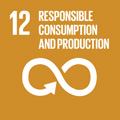- Docente: Marco Visentin
- Credits: 6
- SSD: SECS-P/08
- Language: English
- Teaching Mode: In-person learning (entirely or partially)
- Campus: Rimini
- Corso: Second cycle degree programme (LM) in Service Management (cod. 5943)
-
from Nov 06, 2024 to Dec 12, 2024
Learning outcomes
At the end of the course students understand and appreciate the relationship between service quality and customer satisfaction and are provided with a picture of the overall performance of the service from a customer perspective. A key element in this process is measuring service quality and customer satisfaction through market research. As such, the course focuses on the understanding and the actual implementation of the tools to measure service quality and customer satisfaction. The course provides knowledge about how to give a managerial pitch focused on service quality and customer satisfaction.
Course contents
- How to write a questionnaire: from qualitative analysis to items definition.
- From Exploratory Factor Analysisin in R to Confirmatory Factor Analysis in LISREL.
- Common biases:common variance, discriminant validity, convergent validity.
- Structural Equation Modeling with LISREL
Readings/Bibliography
K. G. Jöreskog, Dag Sörbom is the main reference for this course. Students may also use "Structural Equation Modeling with LISREL: Essentials and Advances" by Leslie A. Hayduk (1987, The John Hopkins University Press).
Materiale addizionale, script di R e LISREL distribuiti durante le lezioni e disponibili sulle risorse virtuali.
Teaching methods
Classical teaching.
Lab sessions.
Finalization of the group project, including:
- the development of a questionnaire, the definition of a sampling plan, the collection of data and the analysis with the methodologies presented during the course;
- the creation of a professional level presentation.
Assessment methods
For the students participating in a group project, each group must provide, at least one day before the presentation:
- the data and the R code;
- a short document (max 10 pages, Times New Roman 11, line spacing 1, standard margins) in which it is explained how the results were reached starting from the analysis of the empirical context;
- the presentation document (for example a PowerPoint
The grading of the project work score is as follows:
- 28-30L project correct, exhaustive, complex, which highlights the complete mastery of the topics covered in the course and a consistent execution ability with any minor inaccuracies;
- 24-27 project not entirely correct and/or incomplete, from which emerges an appreciable degree of knowledge of the topics covered in the course and a good ability of execution;
- 18-23 projects with significant methodological inaccuracies or significant analytical imperfections, which show just sufficient ability of execution;
- 0-17 project inadequate for method setting and/or data analysis.
The group grade is corrected by the evaluation of the group members. Just before the presentation, each member will be asked to evaluate the executive and creative contribution of the other group members. Those who get an average rating from their group members below 10% below the average will receive 10% less than the group's vote.
Non-attending students can take the exam orally as part of the usual exam sessions.
Students dissatisfied with the evaluation obtained from the group project can take the oral exam limited to a single question with the possibility of increasing the final grade of the group project corrected by the evaluation of the other members by a maximum of 2 points.
The oral exam takes place on the topics covered in class and with reference to the material proposed in the bibliography. The graduation of the final grade is as follows:
- 18-19: knowledge of a very limited number of topics covered in the course and analytical skills that emerge only with the help of the teacher, expressed in an overall correct language;
- 20-24: knowledge of a limited number of topics covered in the course and ability to autonomous analysis only on purely executive matters, expression in correct language;
- 25-29: good knowledge of a large number of topics covered in the course, ability to make independent choices of critical analysis, mastery of specific terminology;
- 30-30L: Excellent knowledge of the topics covered in the course, ability to make autonomous choices of critical analysis and connection, full mastery of specific terminology and ability to argue and self-reflection.
Teaching tools
The course is based on introductory theory and practical training on R and Lisrel. Examples and data will be provided during the lessons.
Teaching notes, and all teaching material available on virtual resources.Office hours
See the website of Marco Visentin
SDGs



This teaching activity contributes to the achievement of the Sustainable Development Goals of the UN 2030 Agenda.
